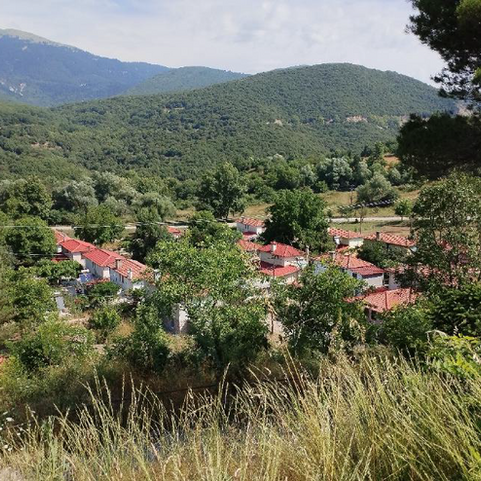
The New Village
Special thanks given to the NTUA Research Team for anecdotes and statistics.

Photo credit: Earthquake Victims Archive of the Technical Works Directorate of the Region of Central Greece, NTUA Research Team
The project to create New Viniani began in the spring of 1967, a year after the earthquake and landslides that followed. While the planning of New Viniani started, residents were housed in pre-fabricated shacks that consisted of a single room and kitchen and shared toilets. This temporary settlement lasted about six years until the construction of New Viniani. The shacks existed from 1967 to 1973. The new settlement at “Livadia” was to be built on 144 acres of agricultural land that was acquired by ex-proprietation procedures.
Prior to that, this land appeared to be a small flat plateau divided into farms. This area was the location of Karoplesitis Inn “Hani”, which was burned down during the war by the occupying forces. New Viniani was to consist of 98 urban plan two-story homes on 22 x 16 meter land plots, with additional plots on the edge of the settlement for future expansion. Each home would have access to a road for movement throughout the settlement.
Finally, the new settlement was planned in 1967, began to be built in 1969, and was completed in 1973. Shortly after the one or two bedroom homes were constructed according to the qualifications of each family, were given out by drawing a raffle number with the corresponding number of the house that was drawn. Thus after the completed houses of New Viniani were transferred to the beneficiaries, each recipient started moving in and making it into a home. This is the beginning of the third known settlement we call Viniani.
In 1971, the population of New Viniani was 189 respectively. In 1981, a population census shows 207 inhabitants. 22 lived in the old village, and 185 in the new one. In 1991, of the 196 inhabitants, only eight lived in the old village. In 1986, it appears that only five shepherds occupied the old village.
In 2001, out of 204 inhabitants, only seven lived in the old village. In 2011, the population had decreased to 130 inhabitants. Of these only three remained in the old village.
More information on this subject will follow.


